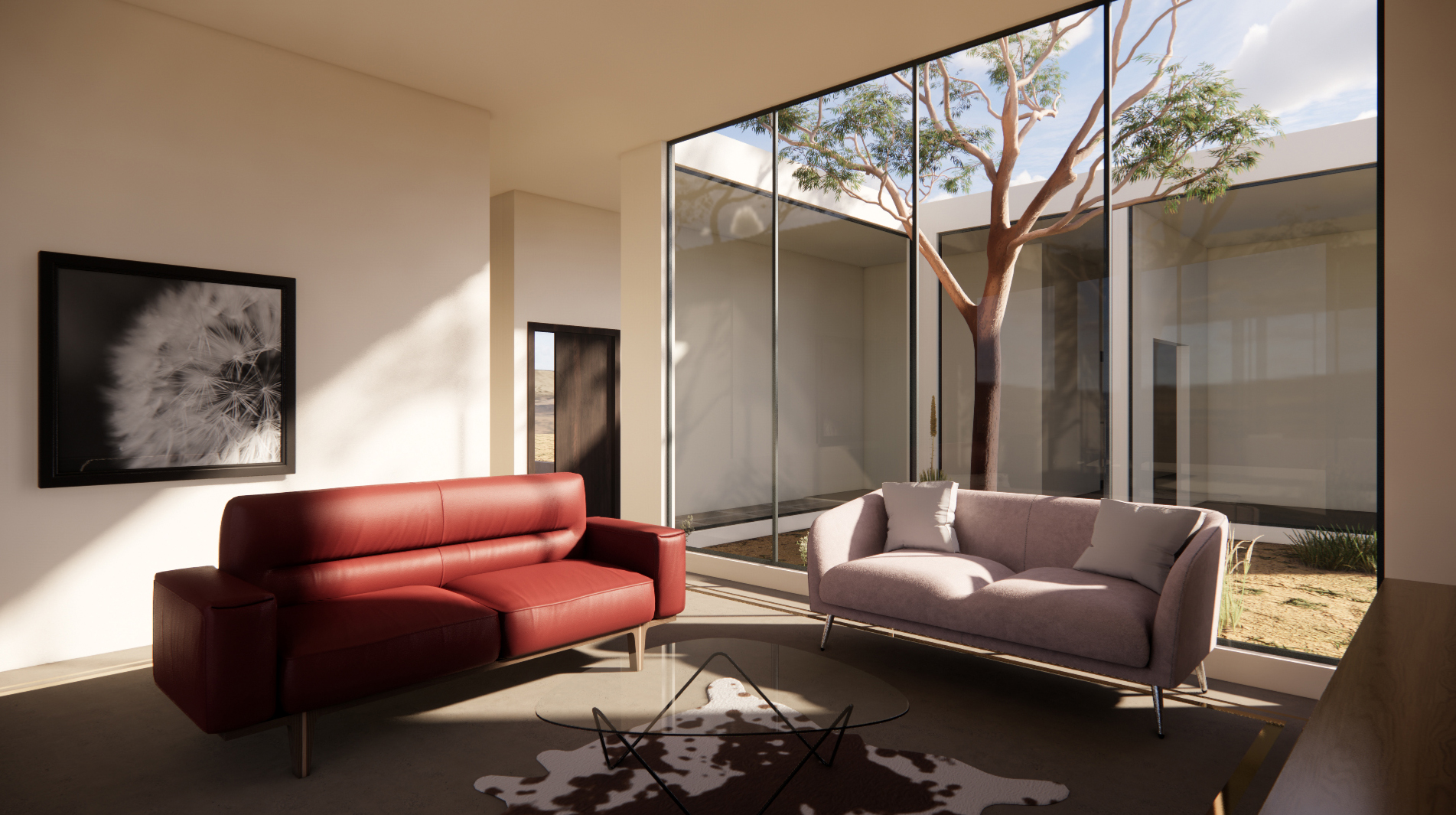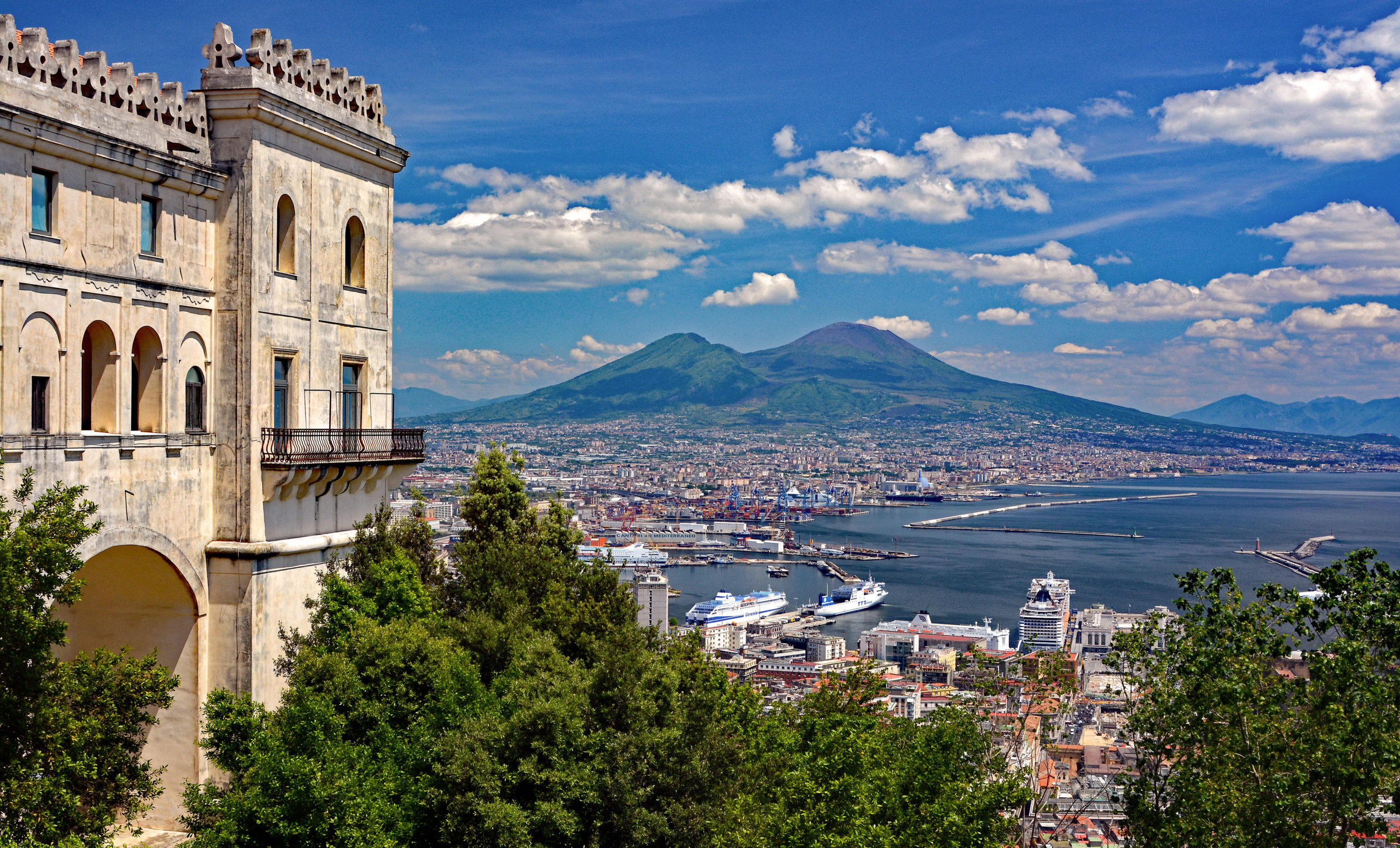Feast your eyes on the world's most outstanding architectural photographs, videos, visualizations, drawing and models: Introducing the winners of Architizer's inaugural Vision Awards. Sign up to receive future program updates >
With the proliferation of smartphones and social media turning everyone into a would-be photographer, you might think that the art of architectural photography is at risk of vanishing. Not so, says Paul Clemence, who is proving that architectural photography has lost none of its artistic power in an age saturated with visual stimuli.
Paul is an award-winning artist, photographer, writer, filmmaker and founder of ARCHI PHOTO, a Facebook phenomenon whose membership comprises over one million people. Currently based in Brooklyn, his architectural photography has been exhibited around the world, including at the Venice Biennale, Art Basel and Design Miami.
To celebrate the end of the 3rd Annual One Photo Challenge, we invited Paul, who is also a juror for the competition, to talk about his craft. Paul explained the process behind some of his most iconic photos and gave his impressions on how great photography can help define (or redefine) a building. We had an enthusiastic and truly global audience tuning in for the talk, spanning from London to Los Angeles and Singapore to South Africa. To reach an even wider audience, the recorded session is now available free on-demand! So, while you’re waiting for the One Photo Winners to be announced, click the button below to have your architectural-photography fill:
We’re also sharing some of Paul’s insightful comments on the power of iconic architectural photography.
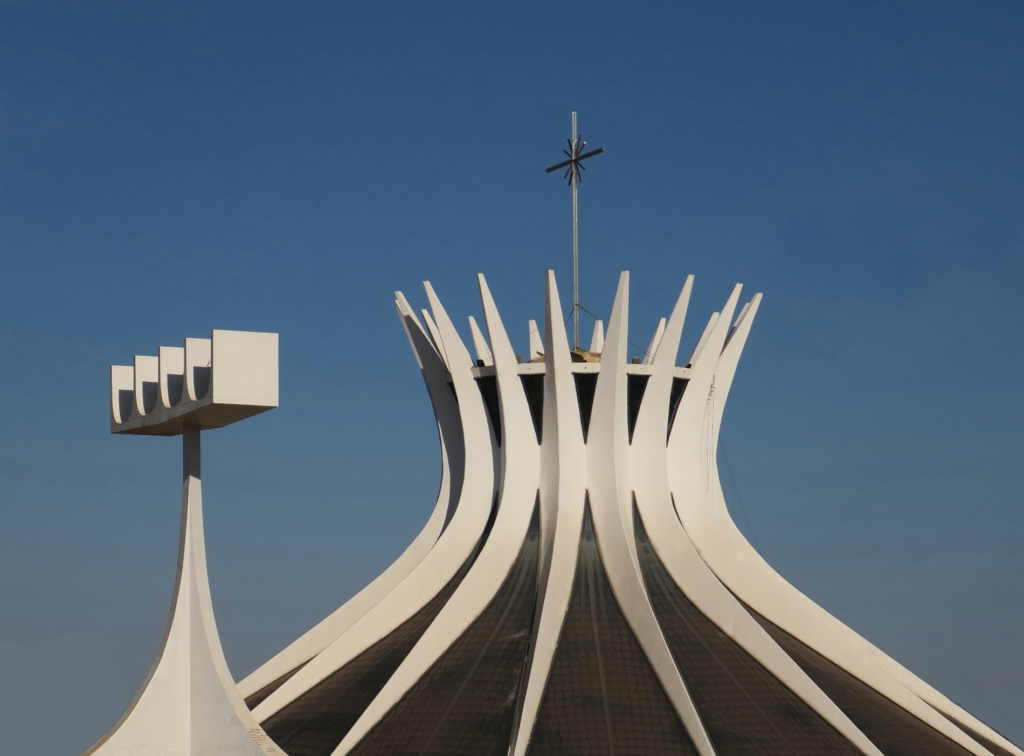
Brasilia Cathedral by Oscar Niemeyer, Brasilia, Brazil | Photograph by Paul Clemence
On the importance of photography in architecture:
“You can’t talk about iconic architecture without an iconic image. I think something will become iconic if it has an iconic image to go with it because we know about the world, about architecture, about people through images… You can see the most wonderful structure but if there’s not a way of communicating that that is as powerful as the structure itself, then the whole thing isn’t moving.”
On how Edward Hopper and Giorgio de Chirico artistically express architecture in their paintings:
“Few painters understood light and space like Edward Hopper. He created images [like “Early Sunday Morning”] – a very ordinary building – but the way he was able to use the light, the composition, and even the colors, it just set up the tone. I think you could say that because of that image it is now an iconic building…
De Chirico also is a master of light, of space but also of mystery, because his paintings have this feel that you’re not sure what’s happening in there, you’re not sure what time of the day it is or what era it is… It makes you want to know more about it. It creates a different type of engagement. If you can translate that kind of engagement to a photograph, then you are creating something that has a more lasting effect.”
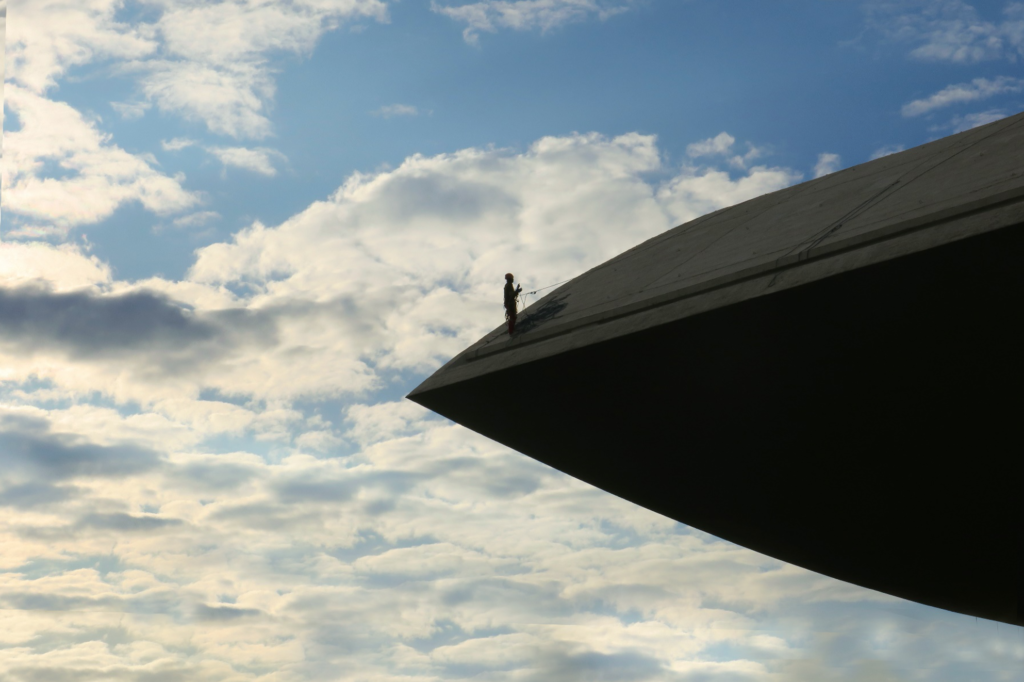
Museu Oscar Niemeyer by Oscar Niemeyer, Curitiba, Brazil | Photograph by Paul Clemence
On having an epic mindset when photographing a building:
“You can’t photograph a structure like this without having a serious consideration for how that image is going to be perceived later on. And how are you connecting to the story of this iconic — in terms of design but also historic — place…
When you’re thinking of iconic structures and creating an iconic image, you have to be a little bit ambitious, even shamelessly ambitious, because you have to look at your image and think ‘how are people going to look at this 50 years from now, 100 years from now? When people are looking at the story of this place you’re photographing 80 years from now, how could your photo be part of the telling of that story?’”
One thing to do before photographing an iconic building:
“When you’re photographing something that you think is important and interested in doing something that will be very iconic or great or expressive, take a moment. Take a few seconds or a minute and just look at the structure and see what the structure is telling you. What is it in that building that attracts you? What makes that building that building? What in that building appeals to you that you want to express. You can’t just whip that out, you’ve got to take a moment to connect with that.”
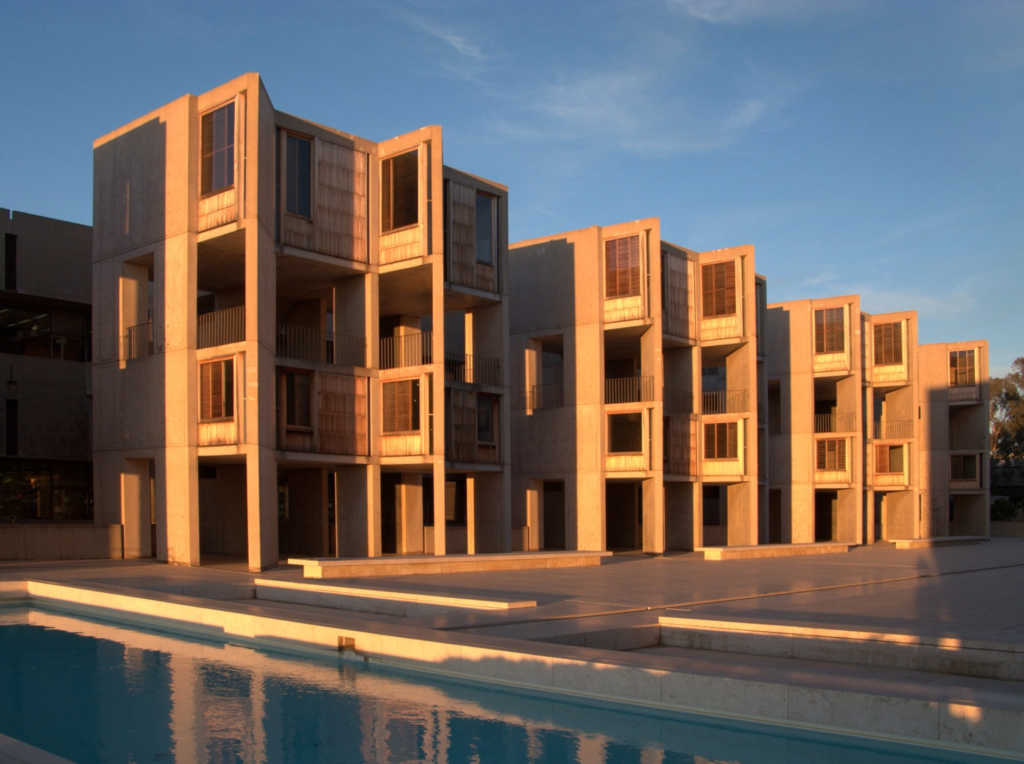
SALK Institute by Louis Kahn, San Diego, CA | Photograph by Paul Clemence
Why it’s important to study a building before setting out to photograph it (when time is limited):
“Prepare yourself. Study the structure you’re going to photograph. For one, study the light. Every opportunity for a photoshoot varies a lot. If you don’t have a lot of time, my suggestion is study where the sun is coming from. So when you arrive there, at that façade that you like so much, is it a morning shot or an afternoon shot? Then you can plan yourself around that.”
On what to do when photographing a building:
“Take a lot of photos. That’s the gift of the digital age and of digital cameras is that you can take so many photos and not worry about carrying film around or developing film and all that. If you’re using digital, explore the possibilities. Go from here or here, kneel down a bit, see what you can find. You’ll be surprised at how many options there are out there. It’s more time consuming, but it is very liberating creatively.”
Should there be people in the photos or not?
“My take on it is this: if you see a space or a structure with someone in it, you are not relating to the structure anymore. You’re relating to that person. You are trying to figure out the story of that person… So I tend to prefer pictures without people, because then the relationship that is established with the image is your own personal relationship with that building.”

Therme Vals by Peter Zumthor, Vals, Switzerland | Photograph by Paul Clemence
Is it possible to take an amazing architectural photo using a smartphone?
“Of course it is possible, but I think the focus is different… For me, personally, I prefer the process of looking through the viewfinder, not knowing nothing about what’s going on around me and focusing solely on the image. Quality-wise though, the cellphones today are very good.”
Tips before investing in an expensive camera:
“I think getting the right camera depends on what you want to do with it. Someone once told me, ‘If you’re looking to buy a more expensive camera, first buy a cheap camera, begin taking photos and see what it is that you’re missing with that camera.’ Do you want it to be a more lightweight camera? Do you want a super powerful zoom? First get a cheap one, then see what your needs are going to be from that one.”
How much editing on Photoshop is too much editing?
“Photoshop is what the darkroom once was. I think people have a romance about analog and a prejudice against photoshop, but when you look at what fantastic photographers would do with the analog, they would airbrush their photos…
On my own work, I think the limit of photoshop is when it no longer looks real anymore, or when it looks fake. There’s always a little tweak you need to do and I don’t think that makes you a lesser photographer. It’s just another tool of the trade.”
Feast your eyes on the world's most outstanding architectural photographs, videos, visualizations, drawing and models: Introducing the winners of Architizer's inaugural Vision Awards. Sign up to receive future program updates >






